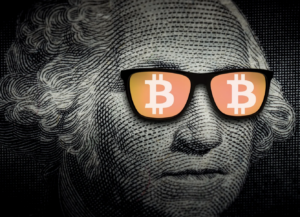The conflict in Israel is having a significant impact on global markets, and experts are speculating about the potential for further volatility in the near future. Investors are seeking safer assets amidst the turmoil, and economists are analyzing the potential implications of the ongoing conflict for the global economy.
The Middle East conflict has prompted investors to reassess their perspectives on global interest rates. Traders are preparing for another week of unpredictable price fluctuations as they anticipate the reopening of markets. Attention will be focused on the US dollar, the Japanese yen, and the Swiss franc when trading begins on Tuesday.
Currency experts are particularly concerned about risk-sensitive currencies such as the Australian dollar, which may come under pressure once again. These currencies experienced early sales at the start of the previous week and could face further challenges as the conflict continues.
Gold prices have reached their highest point since early March due to the uncertainty in global markets. The market will also closely monitor oil prices and Tesouro bonds after a volatile week that saw significant gains and losses for these bonds.
Israel’s main stock index, the TA-35, has resumed its downward trend, signaling increased skepticism among investors. The Israeli military’s preparations for “significant ground operations” in Gaza have heightened concerns about the escalation of the conflict.
In an effort to mitigate the situation, the United States has engaged in quiet conversations with Iran to discourage the country from further escalating the conflict. US Secretary of State Antony Blinken will visit multiple countries in the Middle East, including Israel, Jordan, Bahrain, Turkey, Saudi Arabia, and the United Arab Emirates, as part of diplomatic efforts to address the crisis.
According to Bloomberg Economics, there is a risk of a global economic recession if the conflict in the Middle East expands. This adds to existing investor concerns about the Federal Reserve’s stance on interest rates and the potential for a government shutdown due to a lack of leadership in the US Congress.
Ed Al-Hussainy, a global interest rate strategist at Columbia Threadneedle, believes that a deteriorating macroeconomic environment combined with significant interest rate fluctuations could lead to increased global volatility. While investors are monitoring the Middle East conflict, currency traders are also closely watching the actions of the Federal Reserve.
As a result of these developments, the Swiss franc has reached its highest level against the euro in nearly a year, while the US dollar has continued its upward trend for a fourth consecutive week, despite moderate market volatility. S&P 500 stock volatility has also increased, reflecting the mounting uncertainty in the United States.
Last week’s higher-than-expected inflation report has fueled speculation of a potential interest rate hike by the Federal Reserve. This has led to a surge in 30-year bond sales, reaching their highest daily volume since the beginning of the pandemic.
Uncertainty lingers within the United States itself, with the House of Representatives lacking a leader. Jim Jordan, the Republican nominee, faces significant challenges in becoming Speaker of the House due to concerns over his extreme views. The absence of clear leadership adds to the already complex market dynamics.
While uncertainties abound, the ongoing Middle East conflict remains the major source of concern for investors. The consequences of the conflict remain unclear, and until oil supplies become a worry, the market will remain cautiously optimistic, according to Rabobank’s chief currency strategist, Jane Foley.
In conclusion, the conflict in Israel continues to have far-reaching impacts on global markets. Investors seek safer assets, economists predict a potential global economic slowdown, and traders brace for volatile prices. Attention is focused on key currencies, the fluctuation of gold prices, and the performance of oil prices and bonds. The United States’ engagement in diplomatic efforts and the concerns surrounding its internal political dynamics further complicate the situation. The market remains vigilant, awaiting further developments with cautious optimism.






